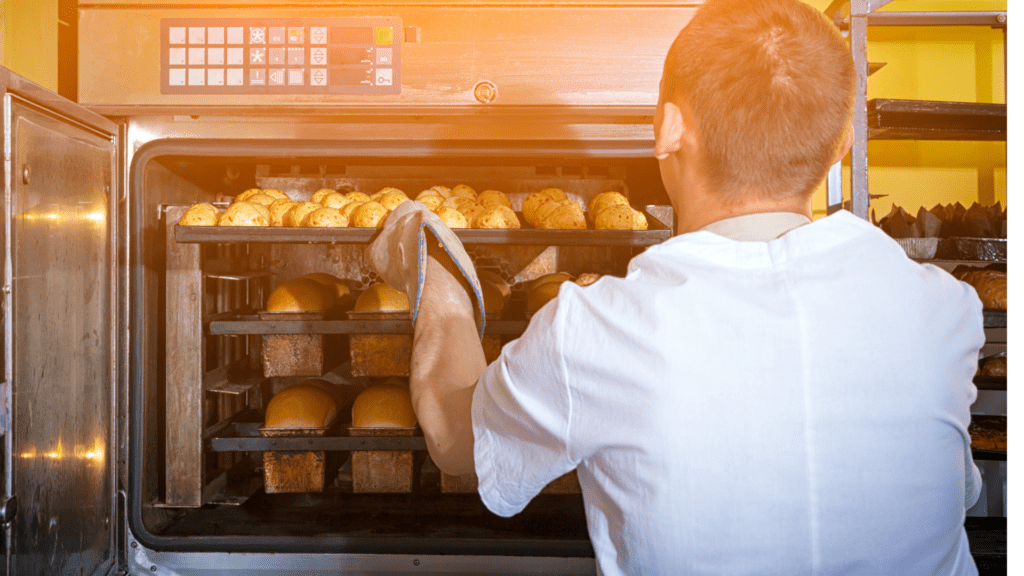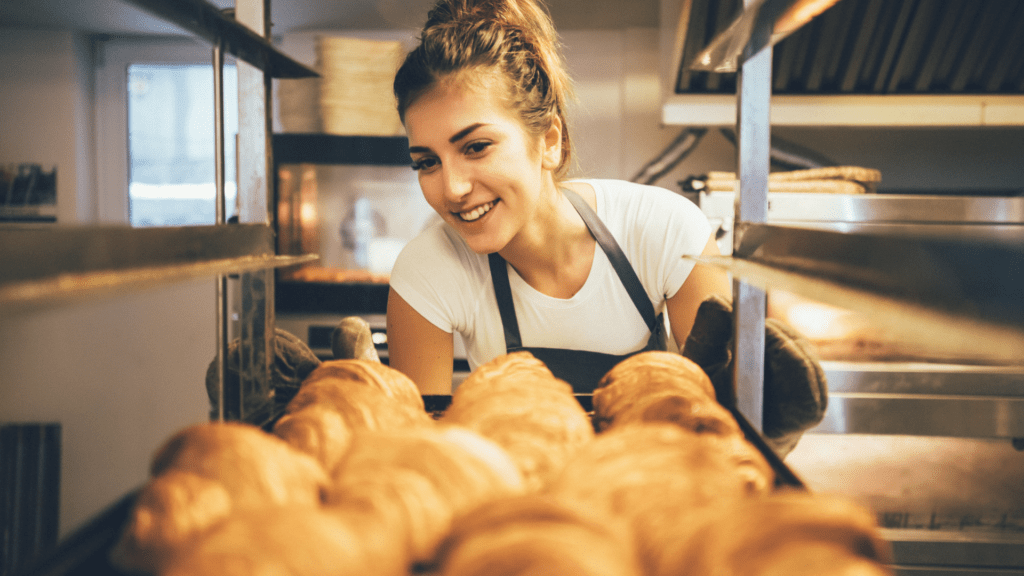In the realm of baking, where precision meets creativity, one aspect stands out as both an art and a science – fermentation. The magic that happens when flour, water, yeast, and time come together creates the foundation for heavenly bread. For bakers seeking to elevate their craft, understanding and mastering the fermentation process is the key to unlocking a world of flavor and texture. Join us on “The Fermentation Frontier,” where we embark on a journey to perfecting dough.
Unveiling the Mystery of Fermentation:
Fermentation is the soul of bread-making, a biological dance that transforms humble ingredients into a symphony of taste and texture. At its core, fermentation is the process by which yeast and bacteria break down carbohydrates into carbon dioxide and alcohol. This not only leavens the dough, making it rise, but also imparts complex flavors and enhances its nutritional profile.
To kick off your expedition into the world of fermentation, it’s essential to comprehend the two primary types: wild fermentation and commercial yeast fermentation. Wild fermentation relies on the natural yeasts and bacteria present in the flour and environment, fostering a more nuanced flavor profile. On the other hand, commercial yeast fermentation offers consistency and speed, ideal for those seeking a quicker turnaround.
Ingredients as Your Allies:
Now that you’ve chosen your fermentation path, let’s delve into the allies that will accompany you on this journey. Flour, water, and salt form the trinity of basic ingredients, while the choice of yeast or sourdough starter determines the course of your dough’s destiny.
Select high-quality flour, preferably unbleached and with a higher protein content for that coveted structure. The water should be at the right temperature, usually around 78°F (25°C), to create an environment conducive to yeast activity. Don’t forget the salt – a flavor enhancer and a dough strengthener.
Experimentation is the spice of baking life, so feel free to explore different flours, hydration levels, and types of salt. Each variation brings a unique character to your dough, contributing to your personalized masterpiece.
The Art of Kneading:
As you knead your dough, you’re not just mixing ingredients; you’re cultivating gluten, the protein responsible for the dough’s structure. The technique and duration of kneading vary depending on your chosen recipe and the desired texture. For a rustic, open crumb, minimal kneading might be the secret, while a softer, sandwich-style bread may benefit from a more robust workout.
To test the readiness of your dough, employ the windowpane test. Stretch a small piece of the dough between your fingers – if it forms a thin, translucent membrane without tearing, your dough is ready to rise.
The Rise of the Dough:
Now comes the moment of anticipation – the dough’s rise. This is where fermentation truly takes center stage. Whether you opt for a room temperature rise or a slow, cold fermentation in the fridge, the goal is the same: allow time for the yeast to work its magic.
For those pursuing a sourdough adventure, the rise is often a dance between patience and precision. Sourdough starters require time to develop complex flavors, and a slow, cool rise can enhance these nuances.
Shaping Your Masterpiece:
As your dough completes its rise, it’s time to shape it into the desired form. Whether you’re crafting a classic boule, a baguette, or a festive holiday loaf, shaping is an art in itself. Gentle handling ensures the preservation of the precious gases produced during fermentation, contributing to that coveted airy crumb.
Experiment with different shaping techniques, embracing imperfections that add character to your bread. After all, no two loaves are exactly alike, and therein lies the beauty of artisanal baking.
Baking Alchemy:
With your shaped dough placed in the oven, the final alchemical transformation unfolds. The aromas wafting through your kitchen are a testament to the culmination of your efforts. Preheat your oven adequately, create steam to achieve a crisp crust, and monitor the baking time diligently.
For a golden brown exterior and a hollow sound when tapped, your bread is ready to emerge from the oven. Allow it to cool on a wire rack, resisting the urge to slice into it immediately – the interior is still settling.
Beyond the Basics: Advanced Techniques and Troubleshooting
Now that you’ve mastered the fundamentals of dough fermentation, let’s explore advanced techniques to take your baking skills to the next level. Whether you’re a seasoned artisan baker or a passionate home enthusiast, these tips will add a touch of finesse to your creations.
1. Levain Development:
For sourdough aficionados, the quality of your levain (sourdough starter) significantly influences the flavor and rise of your bread. Consider experimenting with different flours for your levain to impart distinct characteristics. Additionally, maintaining a consistent feeding schedule and adjusting hydration levels can fine-tune the acidity and texture of your sourdough.
2. Autolyse Technique:
Introduce the autolyse technique to your routine, a rest period where flour and water combine before the addition of yeast and salt. This simple step enhances gluten development, resulting in a more extensible and elastic dough. The autolyse method not only improves the structure of your bread but also deepens its flavor complexity.
3. Temperature Control:
Fine-tune your dough’s temperature during fermentation for precise control over flavor and rise. Consider using a dough proofer or adjusting the room temperature to influence the speed and character of fermentation. Cooler temperatures lead to a slower rise, allowing for more flavor development, while warmer temperatures accelerate the process for a quicker turnaround.
4. Enriched Dough Variations:
Step into the realm of enriched dough by incorporating fats, sugars, and eggs. This opens the door to an array of delicious breads like brioche, challah, and cinnamon rolls. Experiment with different enrichments to discover unique textures and flavors, and don’t be afraid to get creative with additions like nuts, dried fruits, or chocolate chips.
5. Troubleshooting Common Issues:
Even the most seasoned bakers encounter challenges. Here are some troubleshooting tips for common dough issues:
- Overproofing: If your dough has risen excessively and feels fragile, consider reducing the fermentation time or adjusting the ambient temperature during proofing.
- Dense Crumb: Achieving an airy crumb can be elusive. Ensure proper gluten development during kneading, avoid over-flouring, and experiment with hydration levels to strike the right balance.
- Inconsistent Shaping: If your loaves often end up misshapen, practice different shaping techniques, and ensure your dough has the right tension before proofing.
- Flat Bread: A lack of oven spring can result in flat loaves. Ensure your oven is adequately preheated, and experiment with scoring techniques to encourage controlled expansion.
Conclusion: Elevating Your Craft
“The Fermentation Frontier” is not just a destination; it’s a perpetual journey of discovery. As you delve into advanced techniques and troubleshoot challenges, remember that each batch of dough is a canvas for your creativity. Embrace the learning process, celebrate your successes, and learn from your mistakes.
Bread-making is an evolving art, and your skills will continue to grow with each new loaf. Share your experiences with fellow bakers, exchange tips, and revel in the joy of creating something truly special. The perfect loaf is not just about achieving a flawless result; it’s about the passion and dedication you pour into the process.
So, armed with the knowledge gained from “The Fermentation Frontier,” continue pushing the boundaries of your baking prowess. Explore new flavors, textures, and techniques, and let the aroma of freshly baked bread be a testament to your commitment to the art of fermentation. Happy baking, and may your loaves always be a source of pride and joy!


